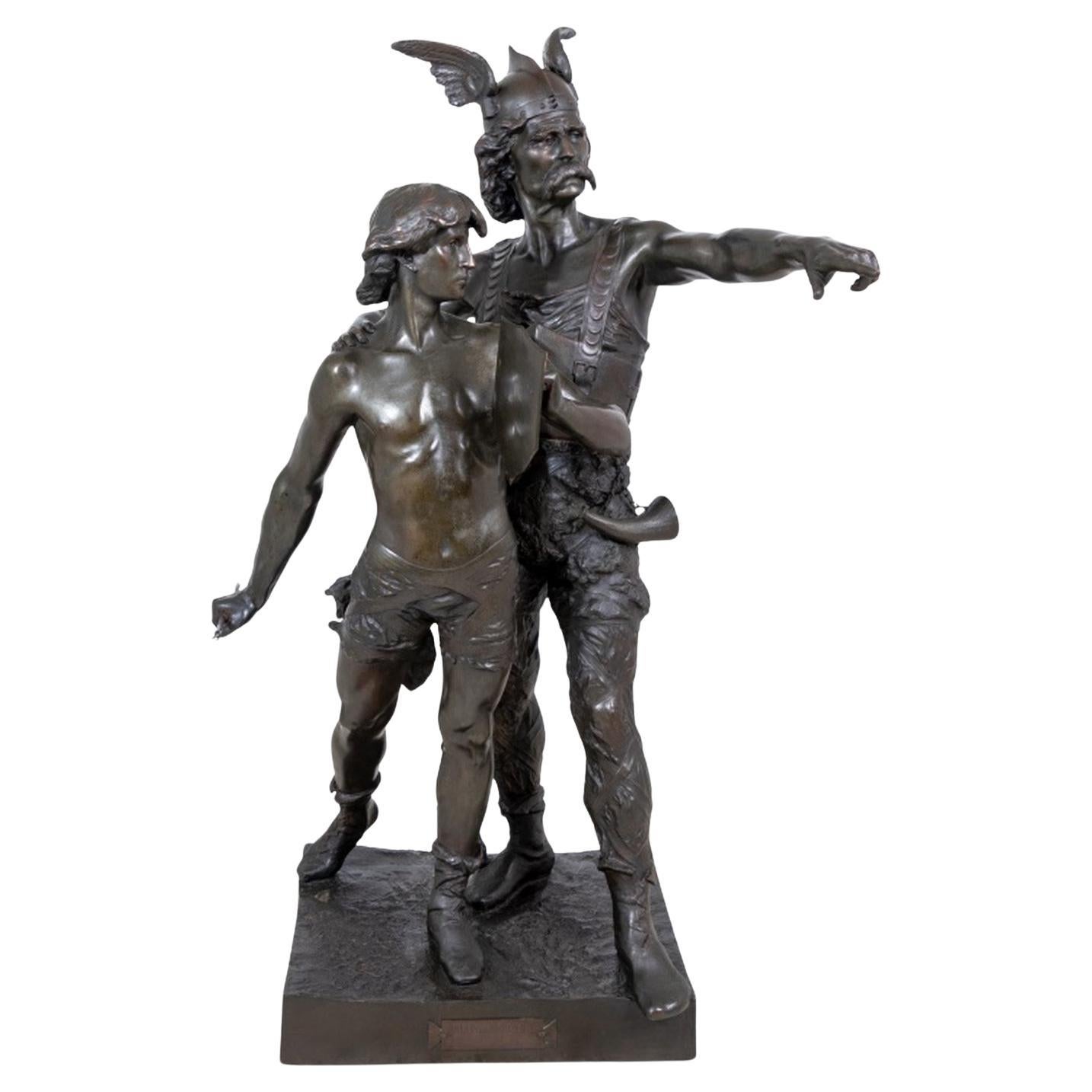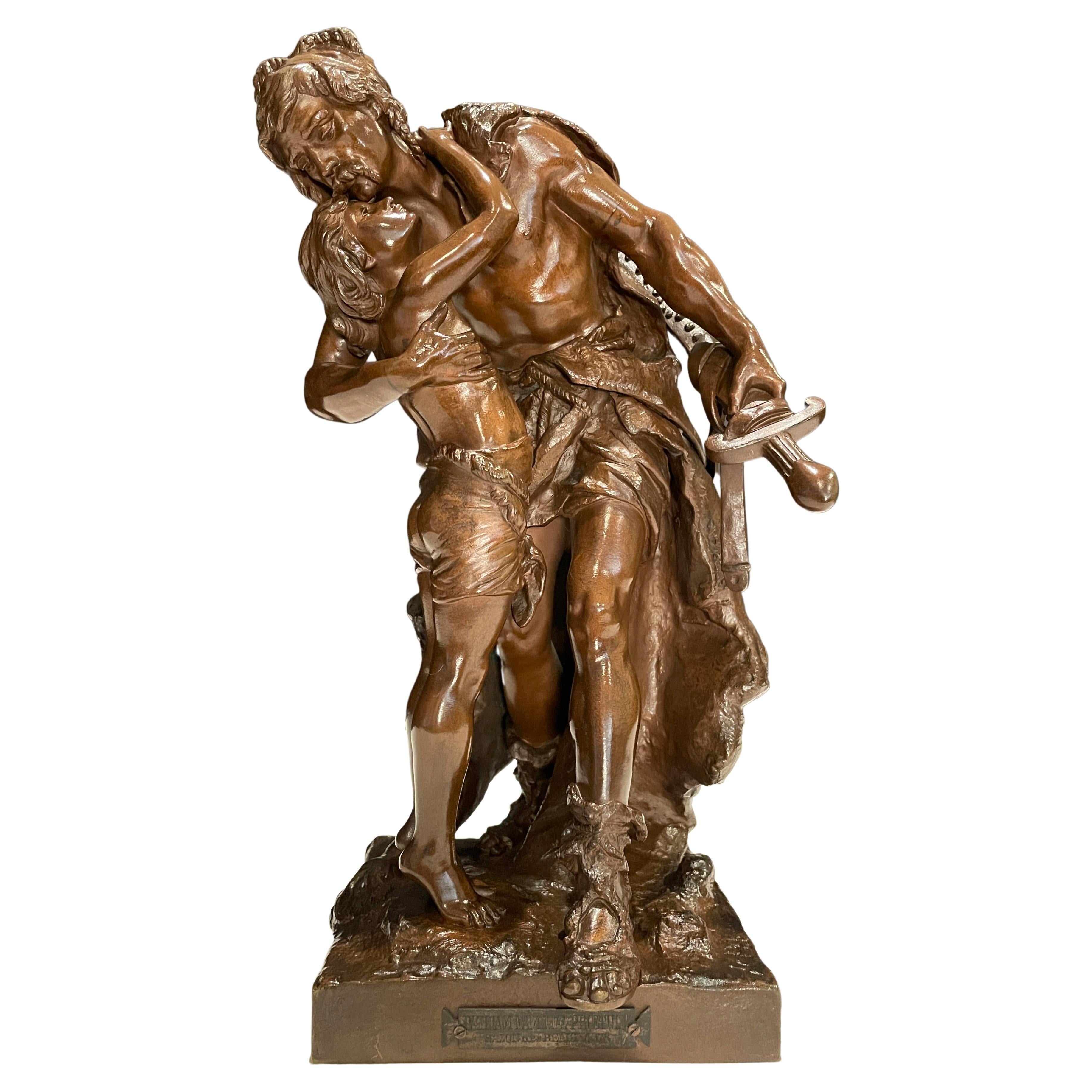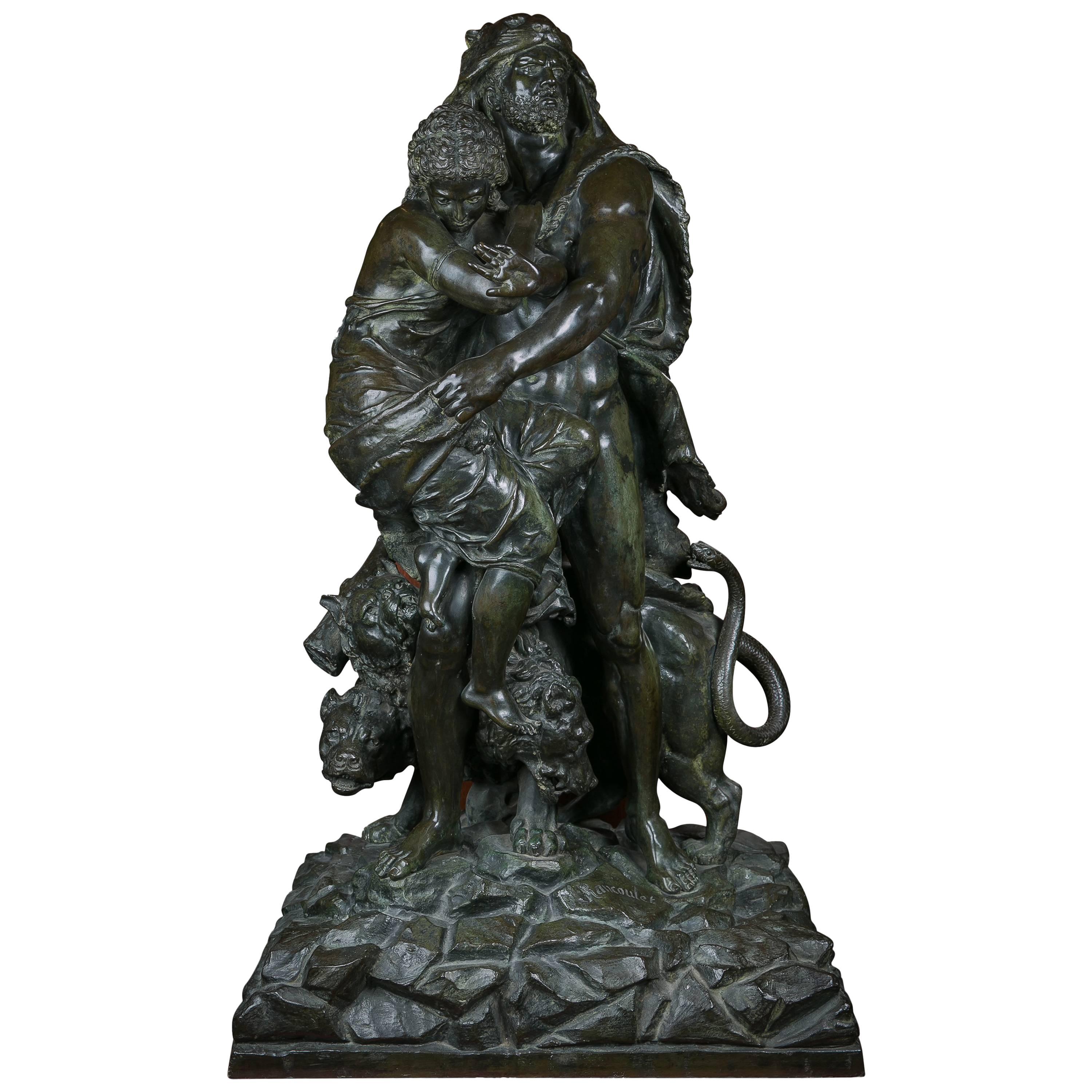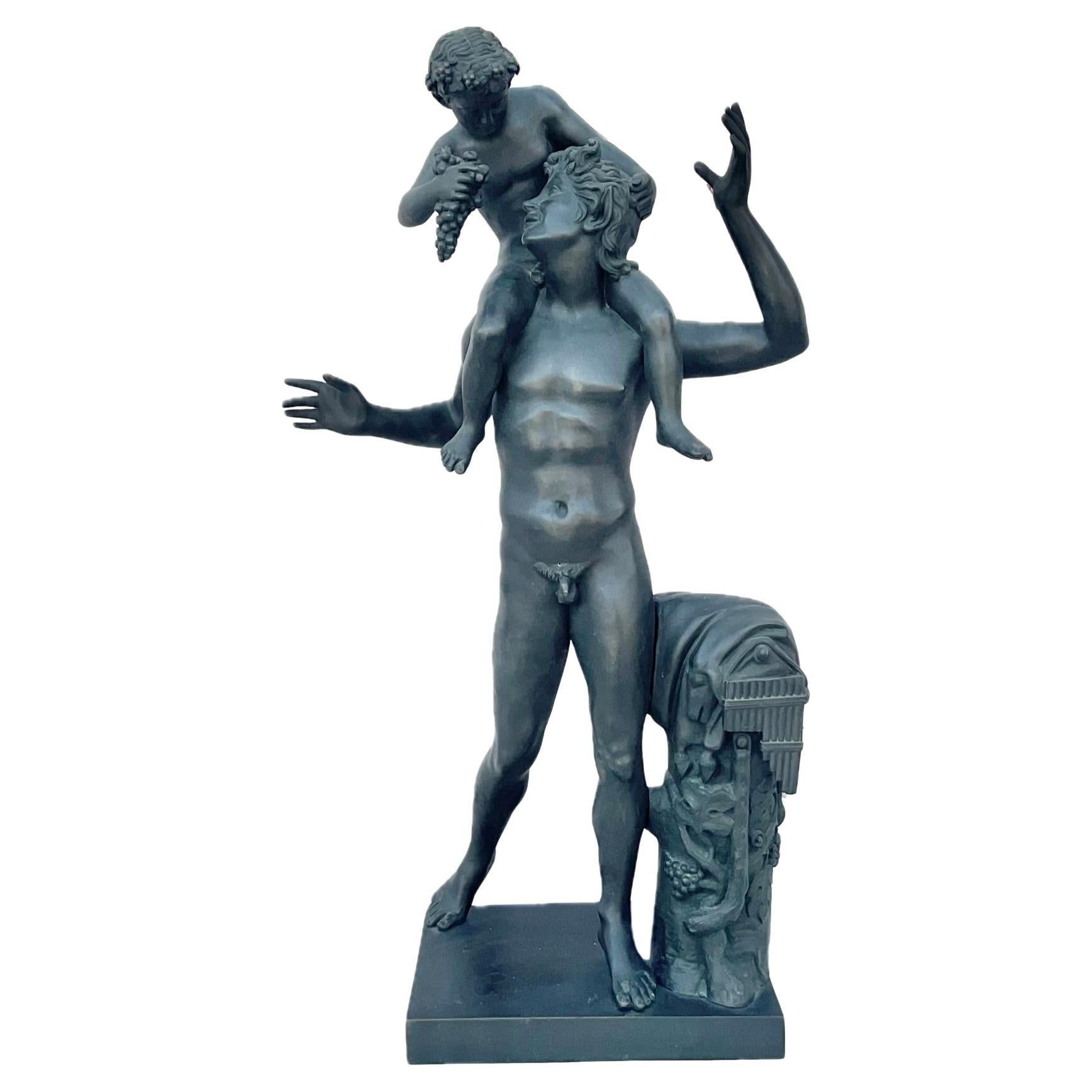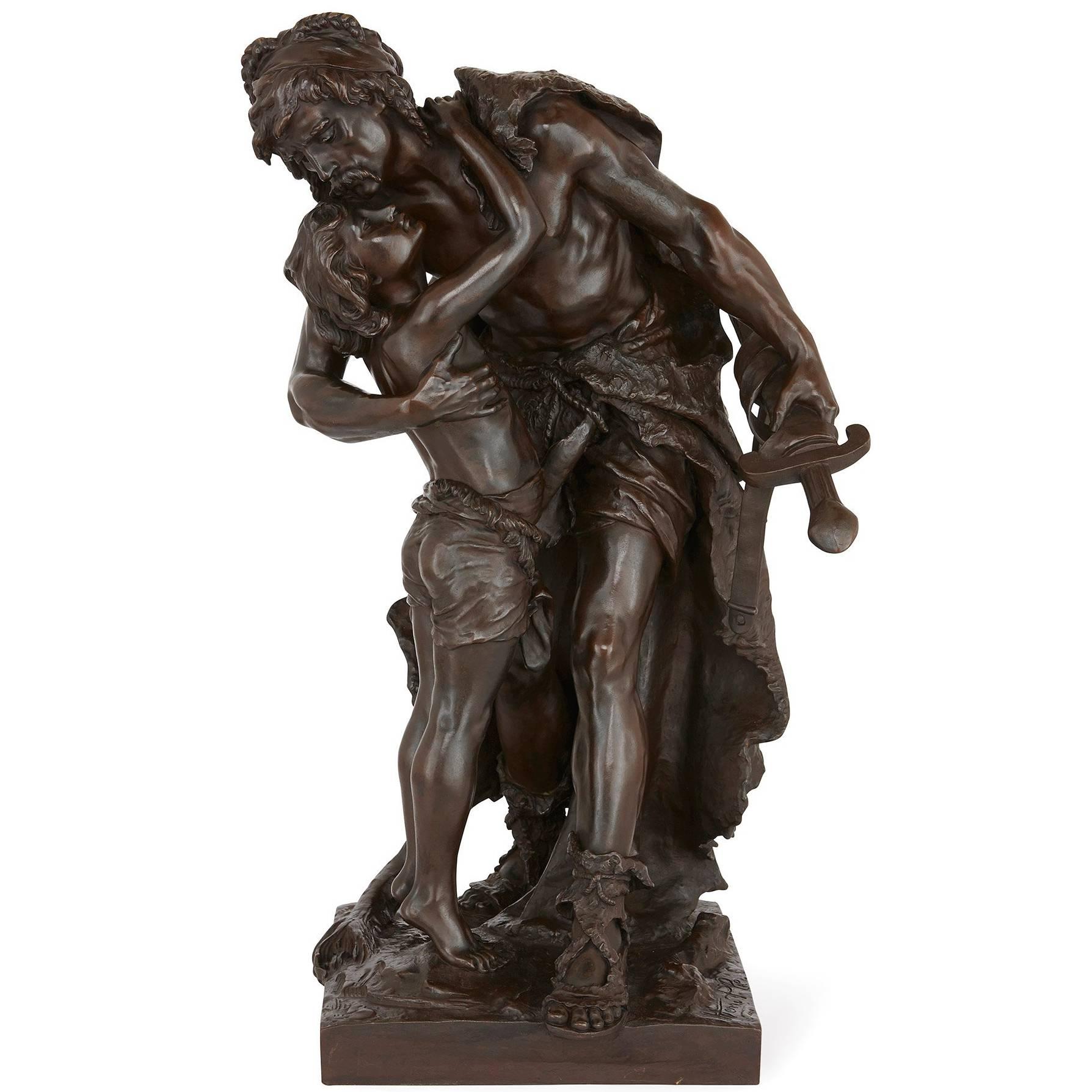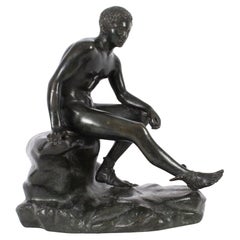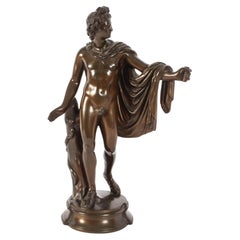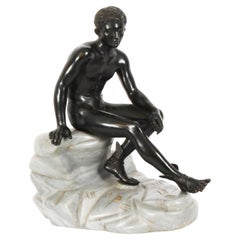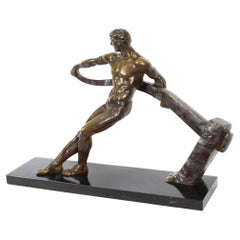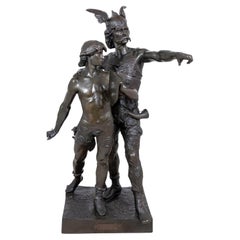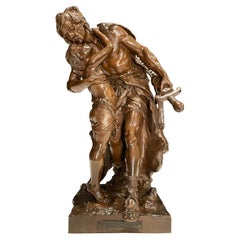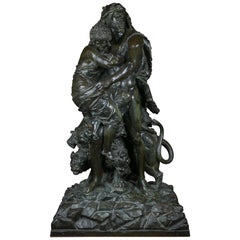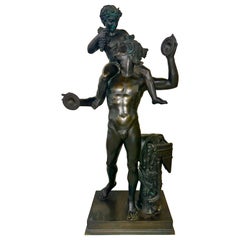Items Similar to Antique Bronze of Vercingetorix with His Son by Emile Laporte 19th Century
Video Loading
Want more images or videos?
Request additional images or videos from the seller
1 of 22
Antique Bronze of Vercingetorix with His Son by Emile Laporte 19th Century
$5,851.59
£4,250
€5,017.40
CA$8,048.53
A$8,952.27
CHF 4,696.35
MX$109,238.02
NOK 58,945.10
SEK 55,548.60
DKK 37,452.73
About the Item
This is a large French bronze sculpture of Vercingetorix with his son by Emile Laporte (1858 - 1901), circa 1890 in date.
The standing figure of Vercingetorix wearing a winged helmet, with arm raised pointing into the distance, a figure of a of his son at his side, holding an axe in his right hand, raised on a rectangular naturalistically cast base, signed and numbered M585 & Salon Des Beaux Arts, Paris on the base.
Emile Laporte was a French sculptor (1858 Paris to 1907) who attended the Academy in Paris and was a student of Gabriel-Jules Thomas, Augustin Dumont, Jean-Marie Bonnassieux and Louis-Ernest Barrias.
Hi exhibited his work at the Salon of French artists from 1881, his last work exhibited there dates from 1905.
The attention to detail is absolutely fantastic and the sculpture is extremely life-like.
Condition:
In really excellent condition, please see photos for confirmation.
Dimensions in cm:
Height 61 x Width 42 x Depth 35
Dimensions in inches:
Height 2 foot x Width 1 foot, 4 inches x Depth 1 foot, 2 inches
In 53 BC, when Caesar had left for Italy after the summer campaign season, the Gallic tribes rebelled under the leadership of Vercingetorix, who raised an army against the Roman legions still wintering in Gaul. Hearing of the rebellion, Caesar crossed the mountains in the south, digging through snow drifts six feet deep, to rejoin his troops. "The very vigour and speed of his march in such wintry conditions," says Plutarch, "was a sufficient advertisement to the natives that an unconquered and unconquerable army was bearing down upon them" (Life of Julius Caesar, XXVI.3). To deprive the Romans of food and supplies, Vercingetorix had ordered a scorched-earth policy, and all the neighboring villages and farms were burned, "until fires were visible in all directions." But one tribe, already having torched twenty towns in a single day, refused to destroy its capital at Avaricum (Bourges), "almost the finest in Gaul, the chief defense and pride of their state."
Vergingetorix relented and set about to help defend the fortified town, which held a large supply of grain so desperately needed by the Romans. Caesar began a siege that lasted twenty-seven days. It now was early spring 52 BC, and, in spite of incessant rain, two wheeled towers, eighty-feet high, and ramps 330 feet long, over which they could be rolled into place, as well as a high siege terrace, were constructed in less than a month. The Gauls did all they could to counter or destroy the siege works. As the towers increased in height, so the defenders raised their own. They attacked the soldiers at work and tunneled under the terrace to undermine it. As the terrace approached the height of the wall, the defenders became desperate. Caesar writes that "They felt that the fate of Gaul depended entirely on what happened at that moment, and performed before our eyes an exploit so memorable that I felt I must not leave it unrecorded." It was almost midnight when they again had dug under the terrace and set it on fire. Opposite one of the towers, a Gaul was throwing pitch and tallow onto the fire when he was killed by an arrow from a catapult. Another man stepped forward to take his place and he, too, was killed. Another came forward and also was killed. This continued throughout the night until the fire finally was extinguished.
The next day, it began to rain heavily and, as the defenders took shelter, one of the siege towers was moved into position. The Gauls, taken by surprise, were dislodged from the walls and, panicked at the sight of the Romans surrounding them, threw down their weapons and fled. Exasperated at the length and difficulty of the siege, the Romans massacred the inhabitants. No-one was spared, "neither old men nor women nor children. Of the whole population—about forty thousand—a bare eight hundred who rushed out of the town at the first alarm got safely through to Vercingetorix."
Later that year, Vercingetorix and his men were trapped in the stronghold of Alesia, near present-day Dijon. Caesar surrounded the oppidum and began to construct siege works. The defenders had food only for a month, and Caesar hoped to starve them into surrender before reinforcements could arrive. The circumvallation extended around the town for ten miles, too large to be occupied by the Romans. It therefore was made more secure by a series of defenses. First, facing the town, a trench twenty-feet wide was dug to protect against surprise attack. Six hundred and fifty yards behind this ditch two more trenches were dug, each fifteen feet wide and the inner one filled with water. Behind these trenches was a palisaded rampart twelve feet high, with a breastwork of earth studded with forked branches. Around the entire circuit of the wall, towers were erected every 130 yards.
Still, there were attacks by the Gauls, and the siege works were strengthened even more. Tree trunks and strong branches were cut and sharpened, and buried securely in rows in front of the trenches. In front of them, diagonal rows of pits also were dug, each three-feet deep with a thick sharpened stake at the bottom and covered with brush to hide the trap. And, in front of these, blocks of wood were buried in the ground with iron barbs (stimuli) fixed in them. Aware that Vercingetorix had sent for reinforcements to break the siege, Caesar had an similar line of defense constructed facing outward to protect against attack from a relief force. By now, the food in the town had been exhausted, and it was determined that all those who could not fight were to be turned out. The inhabitants of Alesia, who had given refuge to Vercingetorix and his men, now were compelled to leave the town, together with their wives and children. Starving, they beseeched the Romans on the surrounding walls to take them in as slaves. But the population was refused any refuge and left to die of hunger between the two armies.
Caesar writes that 250,000 infantry and 8,000 cavalry assembled to relieve the besieged town. But the Gauls had difficulty communicating across the Roman siege works that ringed the oppidum and were not able to coordinate their efforts. Now surrounded, themselves, the Romans were able to repel the first assault. At midnight the next day, the Gauls suddenly attacked again, and Vercingetorix led his men out of the town in support. But it was too dark to see and, when the relief army came nearer the Roman defenses, "they suddenly found themselves pierced by the goads or tumbled into the pits and impaled themselves, while others were killed by heavy siege spears discharged from the rampart and towers." Before he could even reach the trenches, Vercingetorix heard the army retreating and was forced back behind the town walls. Again, the relief force reassembled: "The Gauls knew that unless they broke through the lines they were lost; the Romans, if they could hold their ground, looked forward to the end of all their hardships.... on that day, he said, on that very hour, depended the fruits of all their previous battles." There was a desperate struggle. The Gauls filled the trenches with dirt and bundles of sticks, pulled down the breastworks with hooks, and drove the Romans from the towers. But Caesar, his presence marked by a scarlet cloak, attacked with cavalry and additional cohorts. The Gauls broke and fled, the relieving army giving up and returning to their homes.
Vercingetorix was forced to surrender and presented himself to Caesar. Confined and transported to Rome, he languished in the Tullianum for five years before being killed as part of his victor's triumph in 46 BC. Two years later, Caesar, himself, was dead.
Our reference: A2905.
About the Seller
5.0
Platinum Seller
Premium sellers with a 4.7+ rating and 24-hour response times
Established in 1983
1stDibs seller since 2012
1,386 sales on 1stDibs
Typical response time: <1 hour
Associations
LAPADA - The Association of Arts & Antiques Dealers
- ShippingRetrieving quote...Shipping from: London, United Kingdom
- Return Policy
Authenticity Guarantee
In the unlikely event there’s an issue with an item’s authenticity, contact us within 1 year for a full refund. DetailsMoney-Back Guarantee
If your item is not as described, is damaged in transit, or does not arrive, contact us within 7 days for a full refund. Details24-Hour Cancellation
You have a 24-hour grace period in which to reconsider your purchase, with no questions asked.Vetted Professional Sellers
Our world-class sellers must adhere to strict standards for service and quality, maintaining the integrity of our listings.Price-Match Guarantee
If you find that a seller listed the same item for a lower price elsewhere, we’ll match it.Trusted Global Delivery
Our best-in-class carrier network provides specialized shipping options worldwide, including custom delivery.More From This Seller
View AllAntique Italian Bronze Sculpture Herme Naples Italy 19thC
Located in London, GB
This is a beautifully detailed antique Italian Grand Tour bronze sculpture of Hermes, dating from Circa 1880.
Hermes is cast after the original held at the Museo Nazionale in Naples...
Category
Antique 1880s Figurative Sculptures
Materials
Bronze
Antique Victorian Bronze Sculpture of Greek God Apollo 19th Century
Located in London, GB
This is a truly magnificent antique Victorian patinated bronze sculpture of the famous Greek God Apollo, modelled upon a shaped circular socle, inscribed monogram 'NF' and numbered 2...
Category
Antique 1860s English Victorian Figurative Sculptures
Materials
Bronze
Antique Large Italian Grand Tour Bronze Sculpture Mercury Hermes 19thCentury
Located in London, GB
This is a beautifully detailed antique Italian Grand Tour School bronze figural sculpture of Hermes, dating from Circa 1880.
Mercury is cast after the original held at the Museo Naz...
Category
Antique 1880s Figurative Sculptures
Materials
Bronze
Antique Art Deco Bronze Figure by Maurice Guiraud-Rivière 20th Century
By Maurice Guiraud-Rivière
Located in London, GB
A large fine Art Deco patinated bronze figure of "The Riverman" by Maurice Guiraud-Rivière (French, 1881-1947), circa 1920 in date.
This powerful sculpture is modelled and cast a...
Category
20th Century French Art Deco Figurative Sculptures
Materials
Bronze
Antique Library Bronze of Napoleon Bonaparte 19th Century
Located in London, GB
This is a finely cast brown patinated bronze Grand Tour sculpture of Napoleon Bonaparte, Mid 19th Century in date.
It features Napoleon standing contrapposto in uniform wearing a...
Category
Antique 1850s Figurative Sculptures
Materials
Bronze
Antique Grand Tour Patinated Bronze Figure of Narcissus 1870, 19th Century
Located in London, GB
This is a superb antique Grand Tour patinated bronze figure of Narcissus, dating from the last quarter of the 19th Century.
Narcissus was a hunter in Greek mythology and he was di...
Category
Antique 1870s Figurative Sculptures
Materials
Bronze
You May Also Like
Emile Laporte "King of the Gauls and Son" Bronze
Located in Astoria, NY
Emile Henri Laporte (French, 1858-1907) "King of the Gauls and his Son" also known as "Vercigentorix with His Son" Patinated Bronze Sculpture, late 19th century, depicting the King o...
Category
Antique Late 19th Century French Figurative Sculptures
Materials
Bronze
19th Century Bronze Sculpture Father And Son By Henri Honore Plé
By H. Ple
Located in Norwood, NJ
Henri Honore Plé (1853 - 1922). This beautiful original 19th century French sculpture depicts a moment between father and son. Fine quality patinated bronze, in the naturalistic styl...
Category
Antique Late 19th Century French Beaux Arts Figurative Sculptures
Materials
Bronze
French Bronze Figure of Hercules, Athena and Cerberus, Late 19th Century
Located in New York, NY
Signed Rancoulet. The bronze depicts the twelfth labor of Hercules.
Category
Antique Late 19th Century French Figurative Sculptures
Materials
Bronze
Large Neo Classical Grand Tour Bronze of Satyr and infant Dionysus Bacchus
Located in Palm Springs, CA
A Large Neo Classical Bronze Grand Tour Sculpture depicting a Faun and Pan perhaps. I’ve seen this described as Satyr and the infant Dionys...
Category
Early 20th Century Italian Figurative Sculptures
Materials
Bronze
19th Century Grand Tour Bronze Sculpture of Satyr With Infant Dionysus
Located in Bradenton, FL
Italian 19th century Grand Tour Bronze Figure of Satyr With Infant Dionysus. The Satyr, often associated with music, mischief, and sensual pleasure, is shown with one arm cradling Di...
Category
Antique 19th Century Italian Grand Tour Figurative Sculptures
Materials
Bronze
Antique patinated bronze sculpture of a father and son embracing by Henri Plé
By Henri Honoré Plé
Located in London, GB
This beautiful antique French sculpture depicts a tender moment between father and son. Made of fine patinated bronze, the full length figures of father and son are crafted in the naturalistic style that is typical of Plé's work. The father is dressed in furs and leans to embrace his son in an emotional and touching manner, before he heads to battle. The two figures are set on a naturalistic square plinth, which is signed 'Henri Ple...
Category
Antique Late 19th Century French Classical Greek Figurative Sculptures
Materials
Bronze
$10,464 Sale Price
20% Off
More Ways To Browse
Bronze Tree Of Life
Siege Antique
Large Bronze Cross
Decorative Spears
Used Fire Safes
Roman Bronze Works Bronze
Antique Ring Tree
Pierce And Sons
Roman Capital
Antique Weapon
Antique Bronze Hook
Antique Traps
French Cast Iron Sculpture
Wood Sculpture Tower
Roman Bronze Ring
Helmet Bronze
Antique Iron Crosses
Roman Thomas Furniture
